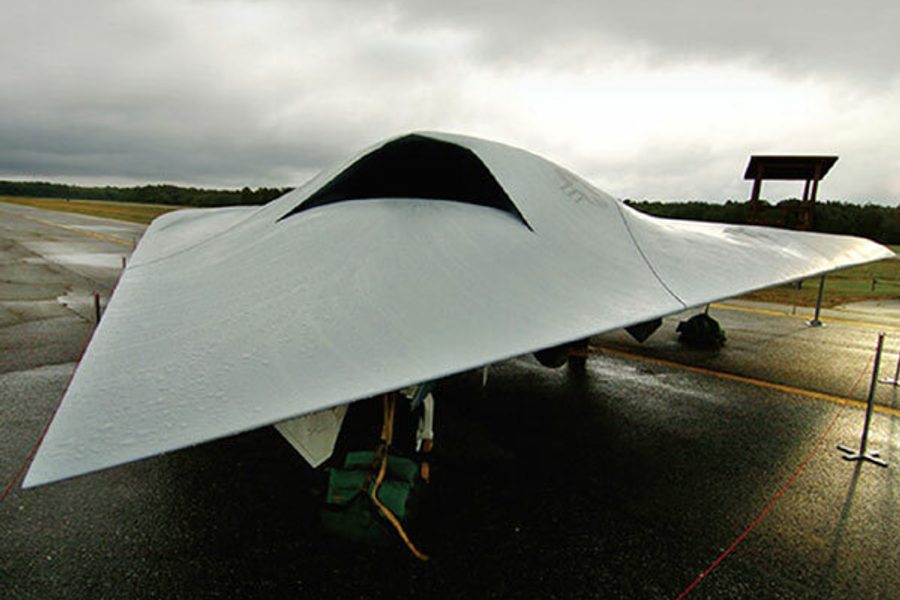
The claws weren’t like other weapons. They were alive, from any practical standpoint, whether the Government wanted to admit it or not. They were not machines. They were living things, spinning, creeping, shaking themselves up suddenly from the gray ash and darting toward a man, climbing up him, rushing for his throat. And that was what they had been designed to do. Their job.
–Philip K. Dick, “Second Variety” (1953)
Robots programmed not just to analyze the foe but to kill him without waiting for orders.
Swarms of bird-sized drones assaulting an enemy force, quickly overwhelming it not just by the numbers but by an artificial intelligence (AI) that can adjust tactics to changing battlefield conditions faster than a human can blink.
Soldiers going into battle with tracked mechanical companions, whom the men don’t just give nicknames to, but cry over when they are “killed.”
The last of these scenarios is already taking place in Iraq, the other two are soon to follow. After that, not just warfare, but human society itself will never be the same.
In his new paradigm-shifter of a book, Wired for War: The Robotics Revolution and Conflict in the 21st Century (Penguin, January), P.W. Singer musters an arsenal of evidence – ranging from overseas battlegrounds to factories busily filling lucrative Pentagon contracts to the most bleeding-edge research workshops – to make one searing point: that human society is hurtling toward one of those great hinges of history, and we are wholly unprepared for its implications.
The issue at hand is the American military’s explosive, recent and mostly unanalyzed – at least outside tech and military circles – increase in the use of robots.
In 2003, the U.S. military was using zero ground robots and just a bare handful of unmanned aerial vehicles (UAVs) in Iraq. By 2008, more than 5,000 UAVs blanketed the skies, looking for and occasionally killing insurgents, while some 12,000 robots roamed below, doing everything from improvised explosive device (IED) disposal to carrying antipersonnel mines down insurgent-haunted alleyways. There is even a robot “hospital” in Baghdad to repair those wounded in combat.
The Air Force, which estimates that 45 percent of its future large bomber fleet could operate “without humans aboard,” is now training more UAV operators than fighter pilots. One military general waggishly refers to American forces in Iraq as the “Army of the Grand Robotic.”
Singer is well situated to write this potentially defining work on the newest “revolution in military affairs” – or RMAs, as acronym-loving defense scholars call them. He penned groundbreaking books on two other anomalous characteristics of modern warfare: the return of mercenaries (Corporate Warriors, 2003) and the rise of child soldiers (Children at War, 2005).
Additionally, Singer deploys his Pentagon experience and deep-geek comprehension of high technology – displaying true “Battlestar Galactica” bona fides by referring to the whole concept of military robotics as “frakkin’ cool” – without sacrificing analytical or moral distance.
The same cannot be said for many of the innovators Singer profiles, however. Their tendency is to ignore the socio-ethical ramifications of their work and blithely assume somebody else will figure it out. For all the billions hurled by the frighteningly well-funded Defense Advanced Research Projects Agency (DARPA) at robotic technology, few people attempt to comprehend its implications. (Singer claims that the military is the source for some 80 percent of AI funding in the United States.)
Given that the advances in robotics and AIs have transformed combat, it’s strange that Singer is unable to find anybody in command to address the next obvious change: allowing armed robots to engage the enemy without human command. Singer calls this “The-Issue-That-Must-Not-Be-Discussed.”
Although such a discussion seems long overdue, as often happens in societies at war, great changes are effected in an ad-hoc fashion. Much as the U.S. military realized belatedly in World War II that its tanks should have two-way radios for better communication (soldiers ripped radios out of police cars at the last minute and used those), today’s Pentagon doesn’t seem to have thought through the ramifications of its new toys.
The Marine advance into Iraq in 2003 was nearly stopped because the corps didn’t stockpile enough batteries. Singer wryly notes that the corps had to borrow batteries from the same “old Europe” nations that then-Secretary of Defense Donald Rumsfeld had derided. Even more worthy of concern is that the military hasn’t grappled with the legal and moral implications of its new, wired warriors, and their human “operators.”
After several chapters, the tone of which could be described as techno-cheerleading, Singer shifts moods to take on the larger implications of modern warfare. The pressure to automate more and more dangerous combat functions is enormous, primarily because it saves soldiers’ lives. If the Vietnam War taught our leaders anything (and it wasn’t to respect a decentralized and lightly armed guerrilla enemy), it was that the public won’t put up with significant American casualties. So robots help fill the gap.
But whereas a soldier who deliberately mistreats a noncombatant can be court-martialed, what happens when a UAV fires a missile at a misidentified Afghani civilian? Does the UAV operator who triggered the launch at his computer terminal in Nevada’s Nellis Air Force Base – where most UAVs are controlled from – get charged with a war crime?
In 2007, a software glitch set off an automated antiaircraft gun being used in an exercise by the South African military, killing nine soldiers. Can the programmers be charged with negligent homicide?
Questions like these aren’t the most disturbing ones that Singer raises. The worrisome crux of Wired for War comes when Singer digs into the mounting disconnect between civilians and the wars their armies wage. While robotics decrease military casualties (at least for the Americans using them, not so much for Iraq’s Republican Guard or the Taliban), they also have the perverse side effect of making war seem easier, more of a sporting event than horrendous instrument of last resort.
Singer gives prominent placement in his book to former assistant secretary of defense Larry Korb, who first predicts a future of “more Kosovos, fewer Iraqs” before noting that robots, “by seeming to lower the human costs of war, may seduce us into more wars.”
For now, war is still primarily a matter of men, women and nonsentient machines dealing death in dangerous and personal ways. But it won’t be this way for long, given the speed with which humanity is not just moving, but racing toward a future of unimaginable robotic and AI advances.
To illustrate the importance of the socio-philosophical shifts he sees in our near future, Singer enlists a particularly vivid prediction, courtesy of tech-visionary Ray Kurzweil: “In just 20 years, the boundary between fantasy and reality will be rent asunder.”






